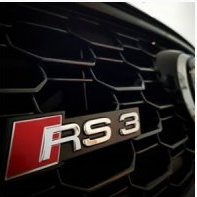Series II turbo. 220rwkw and beyond?
Announcements
-
Similar Content
-
Latest Posts
-
2 does "sort of" applies, maybe......but looking at what parts would be needed for the swap to get engineered, registered, and insured, and basically that's everything under the car, the modifications the make it legal would be problematic and horrendously expensive, all for a street car that just cruises around and hits a few twisty roads on the weekends Also, from looking at the NSW rules and Regs, with all modifications that is required just to make the car safe and not twist itself to pieces, and then actually get registered for street use, may still be impossible nowadays As for 1, when you add in a fresh engine, fresh transmission, rear cradle and diff, tailshaft, suspension, brakes, cooling, and all the other fabrication required, your probably looking at up to $100k to do it right, all for a 20 year old MX5 that is over engineered and you would never be able to actually use the power it has on the street, much like your beastie, which I love, but you actually track that thing and can use all of its powers in anger, in a safe environment Hell, the old Bogan Cruise Ship had more power than I could use on the street, and in hindsight, I went a bit silly on that thing, it didn't really need the 500hp it had for what I actually used the car for, it was fun, but basically unusable on the street if you value your licence As for cams, yeah, I'll probably book it in for them to get installed and tuned soonish, like next month after MX5 Mania are back at work....... and yes, I've already sent a email to bin the turbo quote and quote instead to install cams and a new Fluidampr balancer that will suit the 2.5 better than the OEM 2.0 balancer that is swapped over for the 2.5 install, as the balancer needs to get pulled to time the cams it's a while your in there sort of thing I did think a bit about flex fuel for a laugh, but being na, and no where really around locally anymore to get E85, I've binned that idea, so no sweet sweet corn smells are set for the car I wish E85 was more of a standard fuel, it's better for the environment, better for tuning, plus that sweet sweet smell we all love As for fitting in the family, that's not needed, as everyone in the family already owns a car that can seat 5 humans comfortably enough, the MX5 is "my toy" As for buying a car that is already built, nah, I would rather pick and choose my parts, I enjoy the process, and in the big picture, the additional cost is well worth the enjoyment, and the occasional frustration, I get out of doing it, albeit with other people spinning the spanners, and me, just paying the invoice 🤣
-
Excuse me, but 2) does apply 1) Would also apply if you consider how much is spent in the alternatives. Also there's the option of 3), buy one pre-built that you can put your family in (it's me, it's my car) That said, I went on a ~500km drive the other day. I didn't use anything more adventurous than 3rd/4th gear at about ~3000RPM and 50% throttle and I was going as fast as anyone has any sense doing on a public road, with enough grip to the point where I didn't want to go any faster. I was obviously under the limit of the current car etc etc. MX5 with 2.5 N/A to achieve the same speed would be more fun for any road scenario. Maybe consider cams. I wouldn't boost it. The use case is just not there and it won't actually make the car more enjoyable unless you really do plan on wringing gears from 1st to 3rd (at least) at 100% WOT on a public road to 150+kmh.
-
Great if: 1. You had all of the money for everything else that is required 2. Lived in a country where you could actually do this and drive it legally on the road Sadly, neither applies to me As for the turbo, I am having second thoughts, mainly for engineering/registration legality reasons and insurance Not saying I've finished doing stupid things that I probably should do to the MX5, but boost, and V8 engine swaps isn't on the cards Strange, but true
-
By Dose Pipe Sutututu · Posted
I like this page, better than that silly turbo kit https://v8roadsters.com/product-category/engine-conversions/engine-conversion-lsx/engine-conversion-lsx-nc/
-






Recommended Posts
Create an account or sign in to comment
You need to be a member in order to leave a comment
Create an account
Sign up for a new account in our community. It's easy!
Register a new accountSign in
Already have an account? Sign in here.
Sign In Now